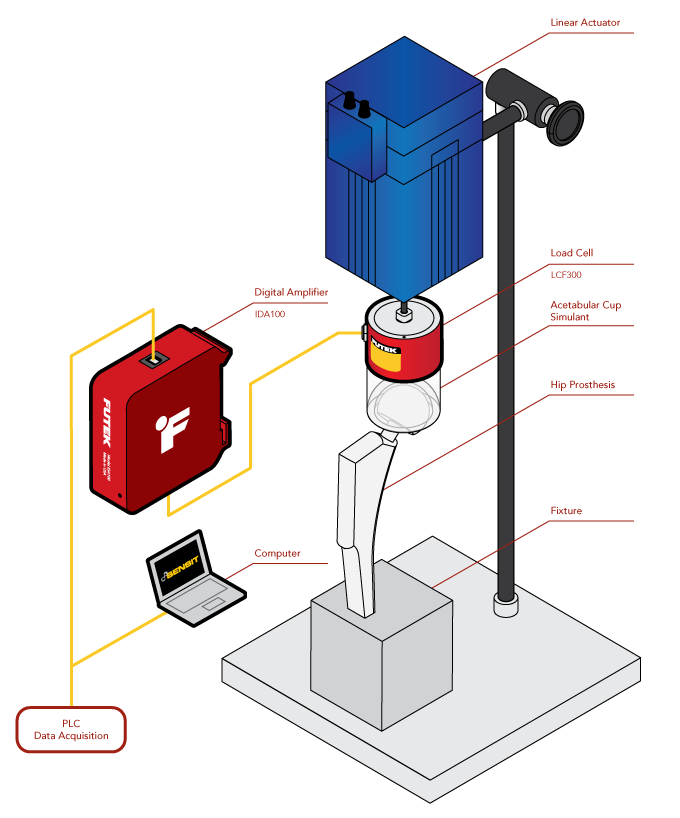How it Works
- 1. The femoral stem of a prosthetic hip joint is fastened into a test fixture. The femoral head is then attached to special acetabular cup.
- 2. A LCF300 universal pancake load cell is then mounted between the acetabular cup and a linear actuator for applied force measurement during testing.
- 3. During testing, the signal from the LCF300 load cell is sent to the IDA100 Digitally Configurable Amplifier. The IDA100 generates an amplified analog signal that can be fed back into the test setup PLC for closed-loop control.
- 4. The digital signal from the IDA100 is streamed over USB to FUTEK’s SENSIT™ software for display/logging/and graphing for compliance with ISO 7206-4, 6 and PI-58 (ISO 7206-8), and ASTM F 2580.
- 5. The IDA100 is capable of digital configuration, allowing sensor calibration and amplifier gain and span settings all controllable from a PC equipped with SENSIT.
- 6. The LCF300 is one of FUTEK’s sensors least sensitive to extraneous loads. In scenarios with extraneous loading, the LCF300 provides accurate test data when perfect in-line measurement is not an option.
- 7. Optionally, the MTA500 multi-axis load cell can be used to measure forces along the Z axis and moments about the X and Y axes.

